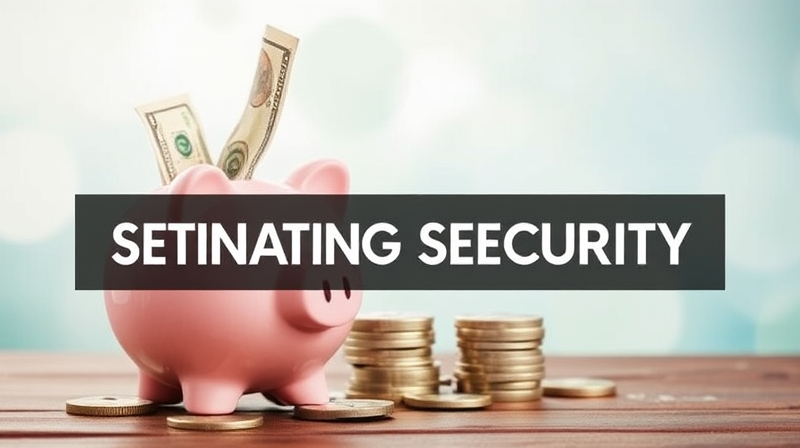Establishing a reliable emergency fund is a crucial step in achieving long-term financial stability. In today’s uncertain economic climate, with challenges such as inflation and high living costs, having a safe financial cushion not only brings peace of mind but also prepares you for unexpected expenses.
An emergency fund acts as a financial safety net, ensuring that you can manage emergencies without disrupting other important financial plans. Whether it is a sudden job loss, unexpected medical costs, or urgent home repairs, having dedicated savings helps you avoid accumulating high-interest debt and puts you in control of your financial future.
Steps to Building an Effective Emergency Fund
1. Determine Your Savings Goal: The journey to building an emergency fund begins with identifying the right amount to save. Financial advisors generally recommend setting aside between three to six months’ worth of essential living expenses. If you have a stable job and few dependents, a target of three months could suffice. However, for those who are self-employed or have an irregular income, aiming for six months or more may be more appropriate.
Essential expenses to consider include rent or mortgage payments, utilities, groceries, transportation costs, and insurance premiums. Experts suggest starting small—even an initial target of $1,000 can provide a valuable cushion for unexpected situations.
2. Create a Dedicated Emergency Fund: One of the most effective strategies is to keep your emergency fund separate from your everyday bank accounts. By placing these funds in a high-yield savings account or a money market account, not only do you gain easy access to them, but you also earn interest over time. This segregation helps avoid accidental spending, ensuring your safety net remains intact and ready when you truly need it.
3. Automate Your Savings: Consistency in saving is vital, and automation provides a seamless solution. Set up automatic transfers from your checking account to your emergency fund right after every paycheck deposit. Some employers also offer a direct deposit option where a percentage of your salary goes straight into your savings. This automated approach minimizes the risk of forgetting to save and helps you build your fund steadily and predictably.
4. Reduce Unnecessary Expenses: Take a close look at your monthly expenditures and identify areas where you might be overspending. Cancel unused subscriptions, limit frequent dining out, and implement strategies such as the 24-hour rule for major purchases to avoid impulse spending. The funds saved from these adjustments can be redirected into your emergency fund, adding an extra layer of financial security.
5. Explore Additional Income Streams: Sometimes adjusting your expenses may not be enough. In such cases, increasing your income might be necessary. Consider taking on freelance projects, a part-time job, or even a temporary side hustle. Additionally, selling unused items around your house can provide quick cash. These extra earnings can accelerate your journey toward achieving a robust emergency fund.
6. Monitor and Celebrate Progress: Keeping track of your savings allows you to stay motivated. Utilize budgeting apps or spreadsheets to regularly review your progress. Celebrate every small win—be it reaching your first $500 or $1,000 milestone—as each step forward reinforces the habit of saving. Recognizing these achievements is essential in maintaining the momentum to meet your overall financial goals.
7. Use and Replenish When Necessary: It is crucial to use your emergency fund only for true emergencies. True emergencies include events like unexpected health issues, job loss, or critical home repairs. Once funds are used, make it a priority to replenish the balance as quickly as possible. This practice helps you preserve your long-term financial stability and avoids setting back your savings plan.
8. Stay Disciplined: Discipline is the cornerstone of a successful emergency fund. Keeping the savings separate from your regular accounts helps resist the temptation to use the money for non-essential purchases such as luxury items or vacations. Establish clear guidelines and criteria for what constitutes an emergency, and adhere to them strictly. Maintaining discipline will ensure that your emergency fund remains dedicated solely to genuine crises.
The significance of having an emergency fund cannot be overstated. Not only does it reduce the need to rely on high-interest credit during tough times, but it also enhances overall financial confidence. With careful planning and discipline, anyone can build a reliable emergency fund that supports their broader financial objectives while providing a safety net against life’s uncertainties.
- Determine a realistic savings goal based on your circumstances.
- Separate your emergency funds from daily accounts.
- Use automation to ensure regular contributions.
- Cut back on non-essential expenses and reinvest savings.
- Seek additional income sources if needed.
- Monitor progress and celebrate milestones.
- Only draw on savings for genuine emergencies.
- Stay disciplined to safeguard your fund.
Building an emergency fund is a gradual process that requires consistency, dedication, and a well-thought-out strategy. Keep in mind that every little bit saved contributes to the overall safety net that will support you during unforeseen challenges. By taking these steps, you are not only investing in a financial buffer but also in your future. Embrace the process with perseverance and recognize that each small effort is a significant move toward long-lasting financial independence.








